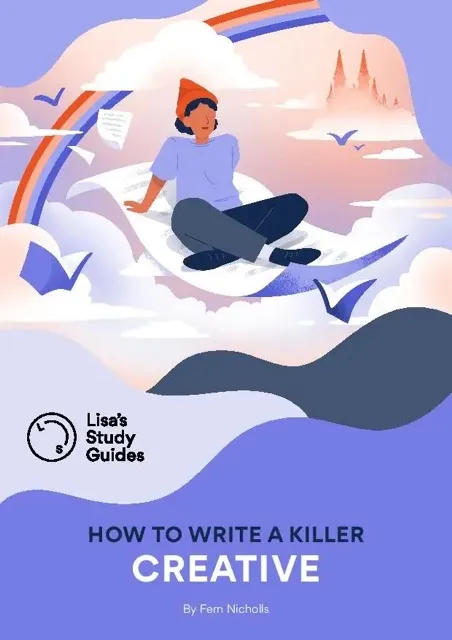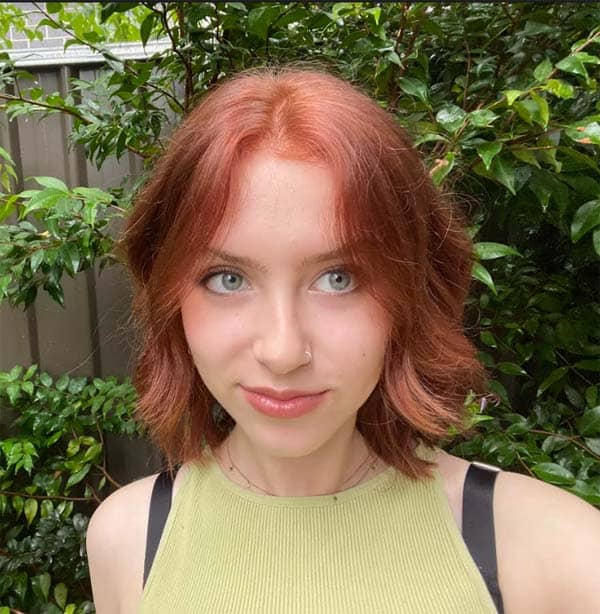We’ve explored creative writing criteria, literary elements and how to replicate the text over on our The Ultimate Guide to VCE Creative Writing blog post. If you need a quick refresher or you’re new to creative writing, I highly recommend checking it out!
---
For many students, writing creative pieces can be slightly daunting. For some, it is about unleashing the writer within as the boundaries and thematic constraints that exist in Text Response are lifted. For others, it can be an opportunity to discover new writing styles, branching out from the generic T-E-E-L structure.
Formats of imaginative pieces include:
- short narratives,
- a personal diary entry ,
- chronicling the character's thoughts,
- epilogues,
- scripts,
- and monologues.
Writing in an imaginative style allows you to draw from your own morals, views and feelings. You can weave in personal anecdotes, experiences, and metaphorical language which gives one's writing that pizazz and individualist factor!
Moreover, you can showcase how you have perceived and interpreted the characters within the novel/film, the landscapes they inhabit. Alternatively, you can step into different personas. For example, for the topic of conflict, I can write as an injured army medic, a doctor, a foreign correspondent and a war photographer.
However, imaginative writing also has many pitfalls students tumble into (do not despair; you can get out of it!):
1. Don't get too caught up in emotions and flowery language.
Great imaginative pieces are not only graded on how good your story telling skills are. More importantly, your teachers would be grading on the palpable links to the themes of the text and prompt you have been given.
In Year 11, when I wrote an imaginative piece, I went overboard with the flowery metaphorical language. My teacher said ‘Overall, the piece is good however, at some parts it sounded like purple prose.’ When I read it over now, I shudder a little.
2. In Reading and Creative, there is greater emphasis on extrapolating themes and ideas from your studied text.
So, those radical and out-of-the box ideas and views you have in relation to the text can now be used.
For example, the overarching themes in Every Man In This Village Is A Liar encompass the Palestinian-Israeli conflict, inequality (the unequal status of women in Middle East), the effect of war on the physical body and the human psych and, how the media portrays war and violence. The starting point to planning any context piece is to use quotes and ideas within your text. Infer meaning from those quotes and main ideas and ask yourself:
- 'Does it hold a great degree of relevance to issues prevalent today?'
- 'Can I link it to my sac/exam prompt?'
So, here's an example of planning a creative piece. Two of my favourite quotes from Life of Galileo are:
'Science is the rightful, much loved daughter of the church.'
‘Our ignorance is limitless; let us lop off a millimeter off it. Why try to be clever now that we at last have a chance of being less stupid.’
In essence, this conveys the overarching theme of science vs. religion, and how Church and the inquisition exploit the peoples' views through their own ignorance. Their fear of change, pioneering and gaining of new knowledge stems from the prospect of chaos if society's entrenched values are uprooted. I interpreted this as 'ignorance is not bliss' and instead, it breeds fear in people. This is in relevance with the tragic events that has occurred in recent years - acts of terrorism, and/or racially motivated attacks. In the context of our modern society, religion and science still maintain an intriguing and tumultuous relationship. As the advancement of technology and ethics are not at equilibrium, this is where controversy arises. Conversely, we now have to consider whether this relates to the prompt:
A person never knows who they truly are, until tested by conflict.
Possible idea for this example:
"Is it ethical to administer a new drug capable of rewiring and regenerating brain function at a neuronal level to someone who has sustained extensive brain damage? Is it deemed humane to potentially change a person's character? At what personal cost will this have? - Playing god."
Tips To Achieve A+ in Creative Writing
1. Ensure it is related to the text.
A lot of students believe that the reading and creating essay is exactly the same as the old context essay. However, there is a significant difference! While a creative context essay does not have to link to the text in any way and only needs to explore a certain idea (e.g. encountering conflict), the reading and creating essay needs to offer a relevant interpretation of the text as well as show understanding of the text’s messages and how the text creates meaning.
The easiest way to write a creative response that links clearly to the text is to write about a scenario that is related to the plot line. You can do this by writing a continuation of the storyline (i.e. what happens after the end?), or by filling in gaps in the plot line which the author did not explicitly outline (what happens behind the scenes that caused the outcome?) In this way, your response will be completely original and still demonstrate an understanding of the world of the text.
2. Write in a way that shows understanding of how the text creates meaning.
When creating your response, be aware of the features present in your text (such as characters, narrative, motifs etc) that you can use in your own essay. For example, if the text is narrated from a first-person perspective, you may also mimic this in your essay. Or, you could tell it in first-person from another character’s point of view to demonstrate another interpretation of the text. You may also include motifs from the text into your own response. But be careful when making decisions about structure, conventions and language. If the text is written in very formal and concise language, it is probably not a good idea to use slang. Similarly, if the text is a play, structuring your response as a script might be a better choice than writing a poem!
3. Explore the explicit and implied ideas and values in the texts.
Lastly, remember that whilst it is a creative response, your purpose is NOT to tell a nice story but to explore the ideas, values and messages left by the author! There will always be various interpretations regarding these values, and you can express your understanding of the text through your portrayal of certain characters, or through the events in your response. For example, if you were studying Measure for Measure and wanted to explore how human nature cannot be restrained or limited by law and punishment, you could write a continuation of the play in which the city of Vienna has reverted to its original state of moral decay.
4. Show, don't tell
Creative essays are great because they offer interesting and unique stories; however, there is one common downfall that occurs in writing. Some students create pieces that are too straightforward. Rather than using vocabulary, imagery and symbolism to express a point, they simply write down a statement that sums up what they wish to say. Your aim is to invite the reader to experience the story through your words. This can be done through the character’s thoughts, feelings, actions etc. Thus the well-known phrase among writers, ‘Show, don’t tell’. Keeping this idea in mind turn you into a much more successful writer – and you’ll see the difference!
Example 1
Tell: Katie was very happy.
Show: Katie’s face lifted. Little wrinkles appeared around her bright eyes, her dimples made an appearance that dug into her cheeks as a big grin emerged to show her perfect teeth.
Example 2
Tell: She felt horrible for the weeping children.
Show: Guilt throbbed inside her as she stared at the weeping children. Her heart pounded against her chest, her hands trembling beside her still body, her brain screaming at her to do something.
Example 3
Tell: I was scared.
Show: I hear my breathing; heavy, and rapid. I shut my eyes tightly. I can feel goosebumps running up my arms and down my back.
To test whether or not you are ‘telling’ instead of ‘showing’, think about whether or not your sentence leaves room for questions. In Example 1, ‘Katie was very happy’ would leave the reader thinking – what thought or action showed that she was happy? Whereas ‘show’ demonstrated that she was happy without directly stating it.
The key is to go into the finer details of your story!
Finally, have fun and enjoy the process of planning a creative narrative, let your imagination run a little wild and rein it in with your knowledge! Hopefully these tips were helpful and you are now more confident and informed on the Reading and Creating response!
This blog post was written by Amanda Lau, Rosemary Chen and Lisa Tran.






.png)


.png)
.png)
%20copy.jpg)
.png)
.png)
.png)






.png)
.webp)


.webp)
.webp)
.png)
.png)

.jpg)